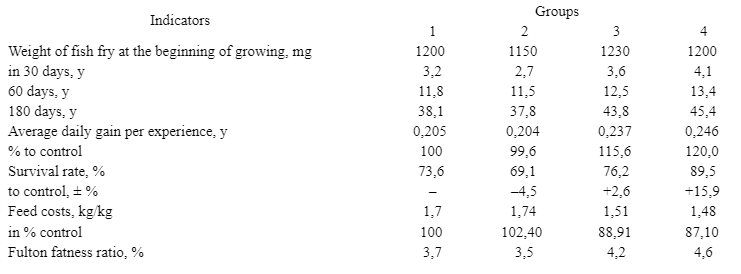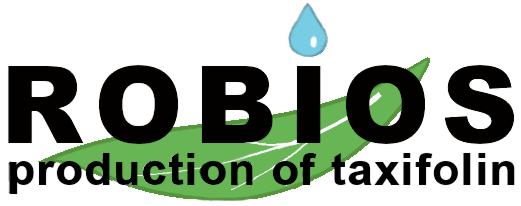Agriculture
Taxifolin in Agriculture. Materials are being added continuously.
1.DHQ (feed, norms) and broilers experiment
2. DHQ (feed) performance of broilers when applied
These studies, and others, are available in pdf format. You can always obtain them from us free of charge, please contact us.
- USE OF THE ANTIOXIDANT DIHYDROQUERCETIN IN PIGLET WEANER FEEDING
Л. A. Nikanova, Ph,
FGBNU “All-Russian Research Institute of Animal Husbandry named after Academician L.K. Ernst”, Dubrovitsy settlement, Podolsk district, Moscow region. 142132, Russian Federation
The article considers the efficiency of inclusion of the natural bioflavonoid dihydroquercetin, which is a part of the feed additive, into the ration of weaned piglets, which significantly reduced the effect of stressful environmental factors, prevented metabolic disorders and increased the adaptive capacity of the animals. As a result, the average daily growth rate of the weight of piglets in the experimental group after weaning was 20.6% higher compared to the average daily growth rate of the control group. The survival rate of the experimental animals was 100 compared to 90% in the control group.
- Improving the reproductive performance of boars by introducing biologically active substances into their ration
Alexander Grigorievich Narizhny, Doctor of Biological Sciences, Chief Researcher of the Pig Breeding Department
Arthur Grigorievich Anisimov, PhD student
Djamaldinov Abdulaziz Chupanovich, Doctor of Biological Sciences
FGBNU “All-Russian Research Institute of Animal Husbandry named after Academician L.K. Ernst”, Dubrovitsy settlement, Podolsk district, Moscow region. 142132, Russian Federation
The effect of feeding boars-producers with the antioxidant dihydroquercetin and a source of essential phospholipids in addition to the diet on sperm quality and sow fecundity was studied. It has been established that separate application of these preparations and their combination significantly improves the reproductive indices of boars. The best indicators were observed in the experimental group which was fed these preparations in a complex in addition to the diet.
- ANTIOXIDANTS IN DIETS OF BLACK-MOTLEY BREED CATTLE AND THEIR INFLUENCE ON THE BIOCHEMICAL COMPOSITION OF BLOOD
С. D. Batanov, Doctor of Agricultural Sciences, Professor;
О. A. Krasnova, Candidate of Agricultural Sciences, Associate Professor;
Е. V. Khardina, post-graduate student;
А. D. student; E. Khardina, Postgraduate student; A. Yu.
D. student; FGBOU VPO “Izhevsk State Agricultural Academy”, Russia
The effect of synthetic (ionol) and natural (dihydroquercetin) antioxidants on the intensity of metabolic processes of growing young cattle has been studied. The blood analysis data for the groups of animals of different sexes on the main haematological indices beginning from the age of 3 months up to the age of 12 months are given. By the blood serum analysis of the animals of the analyzed groups, a positive effect of the antioxidant of natural origin on the internal state of the organism of both repair and fattening young cattle has been established. The presented results of researches allow to assert with confidence that use of biologically active substances in animal feeding promotes biostimulation of course of metabolic processes in an organism of heifers and bulls that in the further can positively be reflected in realization of productive potential of these animals.
- BLOOD SERUM TRANSFERASE ACTIVITY OF BLACK-MOTLEY BREED STEERS WHEN FEEDING ANTIOXIDANTS
UDC 636.237.21.054:612.1
O.A. Krasnova, E.V. Khardina
The aim of the research was to estimate the influence of biologically active additives on the metabolic processes in cattle on the basis of transferase activity analysis in blood serum during different periods of growth and development of black-motley breed steers.
Conclusions. The preparation of ionol with antioxidant activity at the rate of 25 mg per 100 kg of live weight per day has shown that there was no positive effect on the metabolic processes in bulls. To reduce the intensification of free-radical peroxidation of lipids and incorporation of products of the process in membranes of cardiomyocytes and hepatocytes we consider promising the use of Dihydroquercetin in the diets of black-motley breed steers in the amount of 25 mg per 100 kg of live weight per day.
- EFFECT OF DIHYDROQUERCETIN AND MINERAL ENTEROSORBENT SUPPLEMENTATION ON SERUM PROTEIN PROFILE, PHYSIOLOGICAL CONDITION AND GROWTH RATE OF CALVES
KOLESNIKOV A.V.0,
G.V. MOLYANOVA.
Samara State Agricultural Academy, 446442, Samara region, Kinel, Ust-Kinelsky settlement, ul.
The experiment was conducted on 40 purebred black-motley bulls, which at the age of 30 days were divided into 4 groups of 10 animals each, fed for 5 months. The basic ration (OR, group I, control), OR with 0,5% dihydroquercetin (group II, OR + 0,5% DC), OR with 3% vodnit (mineral enterosorbent, group III, OR + 3% B) and OR + 3,0% vodnit + 0,5% dihydroquercetin (group IV, OR + 0,5% DC + 3% B) mixed with mixed feed. In group IV an increase in the concentration of total protein and protein fractions in the blood serum compared to other groups was noted: total protein by 14.8% (P<0.001), albumin by 12.9% (P<0.001), γ-globulin by 16.2% (P<0.001) relative to group I, by 12.3, 10.7, 15.1% (P<0.001) relative to group II; by 7.9, 8.7, 7.5% (P<0.001) relative to group III respectively. At the end of experiment live weight of calves was 3,4-14,1% higher (P<0,001) relatively to the control. It was concluded that adding the biologically active substances dihydroquercetin and vodnit to the basic ration of animals increases the physio-immune status of the animals and their productive qualities.
- PHYSIOLOGICAL ASPECTS OF PREVENTION AND METAPHYLAXIS OF METABOLIC DISORDERS AND REDUCED CALF RESISTANCE DURING THE DAIRY BREEDING PERIOD
FGBNU “All-Russian Research Institute of Animal Husbandry named after Academician L.K. Ernst”, Dubrovitsy settlement, Podolsk district, Moscow region. 142132, Russian Federation
SPINUL Anna Ivanovna, Ph.
CONCLUSION
Thus, Dihydroquercetin alone and in combination with arabinogalactan and Alexanat-Zoo (Micellate Ca) in micellar form used in calf nutrition in the dairy period of growing under zoohygienic conditions fully revealed their biological properties, which provided high level of antioxidant protection, formation of gut microbiocenosis and immunity, correction and control of mineral homeostasis in the calf body. As a result, there was normalization and increased intensity of protein, nitrogen, lipid, carbohydrate, energy and mineral metabolism, improved functional status of the liver and increased pathogenic resistance, which in general had a positive effect on the formation of productive health, vitality and resistance to biotic and abiotic environmental factors, safety and average daily gain of calves.
- EFFECT OF THE WOOD BIOPOLYMER DIHYDROQUERCETIN ON MORPHOLOGICAL AND BIOCHEMICAL PARAMETERS OF COW BLOOD
A.A. Romanenko
Vestnik of Altai State Agrarian University No 4 (54), 2009
Thus, the analysis of morphological and biochemical blood parameters showed that keeping animals in conditions of elevated levels of radiation affects the functional features of the body and reduces the level of natural resistance. At the same time, inclusion of wood biopolymer – dihydroquercetin in the ration of cows in the amount of 50 g/head/day reduces the efficiency of radiation impact on the organism, has a positive effect on its functional state and, as a consequence, normalizes the morphological and biochemical blood parameters.
DIHYDROQUERCETIN AND ARABINOGOLACTAN IN STARTER FEEDS FOR STURGEON
Makhmud Omarov, Ph,
Slesareva Olga Alekseevna
North Caucasus Research Institute of Animal Husbandry Russian Federation, Krasnodar,
S.O. Osmanova, Ph.
Dagestan State Medical Academy,
Abstract: The article deals with the experience of applying a new generation antioxidant – dihydroquercetin and an immunostimulant – arabinogalactan in the feeding of sturgeon species. As a result of the research it was found that adding Dihydroquercetin and Arabinogalactan to starter feeds significantly improved survival rates by 15.9 % and productivity of sturgeon fry by 15.6-20 %.
Every organism requires a certain amount of complete protein, fat, carbohydrates, vitamins and minerals at every stage of ontogenesis. [2-6].
Optimisation of diets in terms of protein, energy, vitamins and macro- and microelements makes it possible to significantly increase the efficiency of feeding by increasing the availability and digestibility of nutrients in diets [5,6].
A distinctive feature of feeds for sturgeon fish is the high fat requirement of the feed.
Meanwhile, feed fats oxidize rapidly, resulting in the formation of peroxide radicals that drastically reduce the overall nutrient digestibility of the feed.
This ultimately leads to a decrease in productivity and survival rate of the young fish. At a later age, it leads to destruction of the fish liver. Because of this, 8 – 12 % of fish reach sexual maturity [1, 5, 8-9].
It is of scientific and practical interest to search for biologically active substances that allow to destroy radical peroxide compounds of fats.
Methodology.
A scientific and economic experiment on 4 groups of sturgeon fry of 2000 each was conducted in Kuban Bioresources Ltd. The holding in cages of 4 x 6 m. the duration of the experiment was 120-140 days (Methodological recommendations of the All-Russian Institute of Fisheries, 1977).
Lack of vitamins, macro- and microelements was compensated by premix and mineral feed.
Group 1 fry received Akva feed (positive control), where the diet was balanced for all nutritional elements.
Table 1-Experience diagram
Groups | Number of fish in to the group | Feeding features |
1 | 2000 | OP (control +) imported feed from Aqua (Denmark) |
2 | 2000 | PR (control) |
3 | 2000 | OR + dihydroquercetin (DHQ) in the amount of 50 mg / kg of feed |
4 | 2000 | OR + DHQ 25 mg / kg of feed + arabinogalactan (AH) 50 mg/kg of feed |
The second group (negative control) received mixed fodder balanced in all nutrients according to physiological requirements.
The third group was fed the Group 2 diet + a new generation antioxidant, dihydroquercetin, at the rate of 50 mg per 1 kg of feed.
The fourth group was fed group 2 feed + 25 mg of dihydroquercetin + 50 mg of the immunostimulant arabinogalactan per 1 kg of feed.
The experiment was carried out according to the scheme.During the experiment, live weight gain, feeding coefficient, fry survival rate and fatness rate were taken into account.
Research results and discussion. In the experiment it was found that sturgeon fry in all groups showed high growth intensity. The average daily growth rate varied between 0.204-0.246 g (Table 2).

This is understandable, as the starter feeds in all groups were balanced in terms of all nutritional elements.
The better growth and survival rates of fry in the first group, on Akva feed (Denmark) compared to the second group, were probably due to the addition of immunostimulants. The fry in the third group had a significant increase in live weight or 0.237 g compared to 0.205 g 15.6% higher than in the first group.
Apparently, the new generation antioxidant, dihydroquercetin, destroys fat peroxide radicals and increases dietary efficiency. Fish feed is notable for its high fat content. In addition, the survival rate of fry in the third group increased by 2.6 %, respectively. Compared to the second group, the survival rate of fry increased by 7.1 %.
In the fourth group, where arabinogalactan, an immunostimulant, was injected, the average daily gain increased by 20% (0.246 g compared with 0.205 g in the first group). In addition, the survival rate of fry increased sharply, 89.5% versus 73.6%, or 15.9% higher. Compared to the second group, the same figures are 29.6 % higher. (89.5% vs. 69.1%).
The calculation of the fatness ratio was highest in group 4 (4.6). It is understandable that this group had the best values of the intensity of growth of fish fry. The growth rate of sturgeon fry was in direct dependence on feed consumption. Thus, the feed consumption in the first group was 1.7 kg, while in the fourth group it was 1.43 kg per 1 kg of live weight gain, or 12.9% lower. Thus, the inclusion of dihydroquercetin and arabinogalactan in the starter feed for sturgeon contributed to a sharp increase in the productivity of the fry.
Conclusions: The addition of dihydroquercetin to the starter feed allowed a significant increase in the productivity of fish fry by 15.6 %. The addition of the immunostimulant arabinogalactan to the starter feeds resulted in a 20 % increase in productivity and a 15.9 % high survival rate of fish fry in comparison with the foreign feeds.
